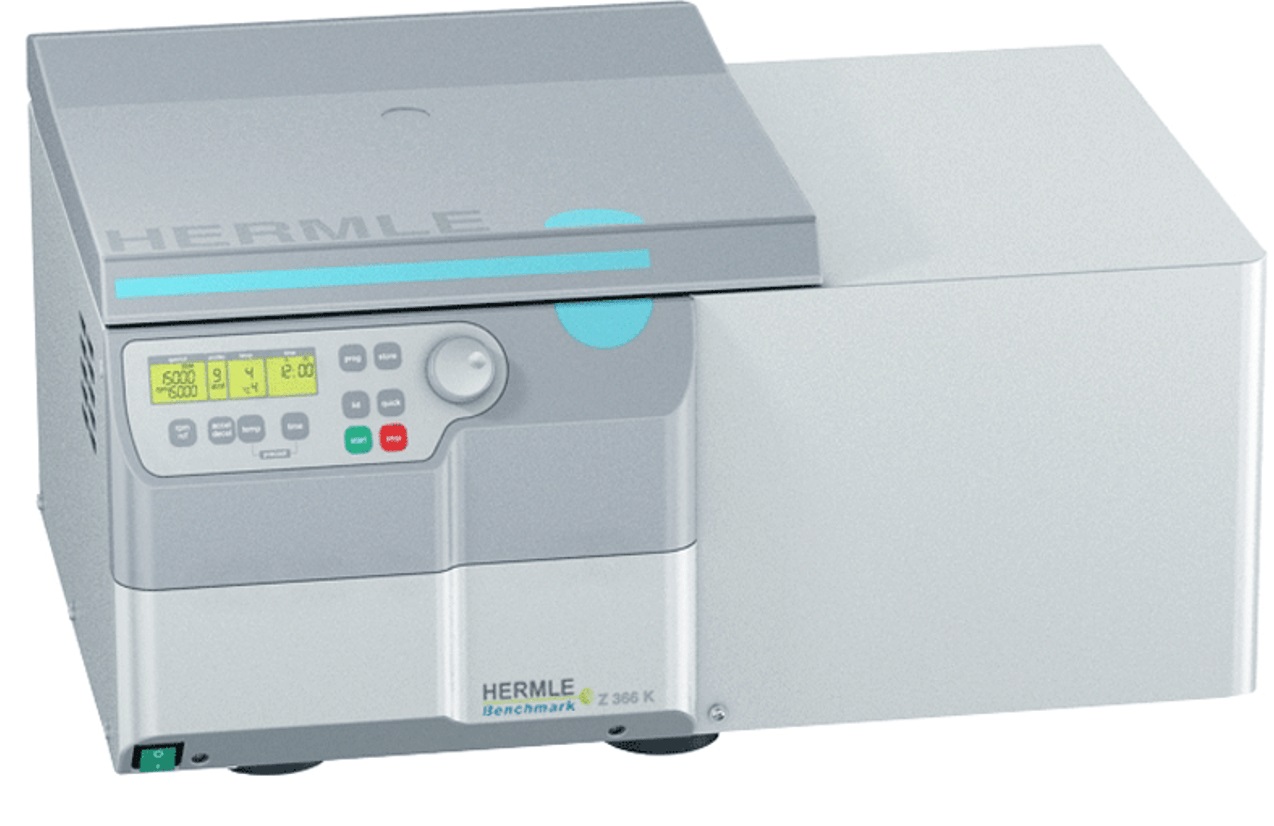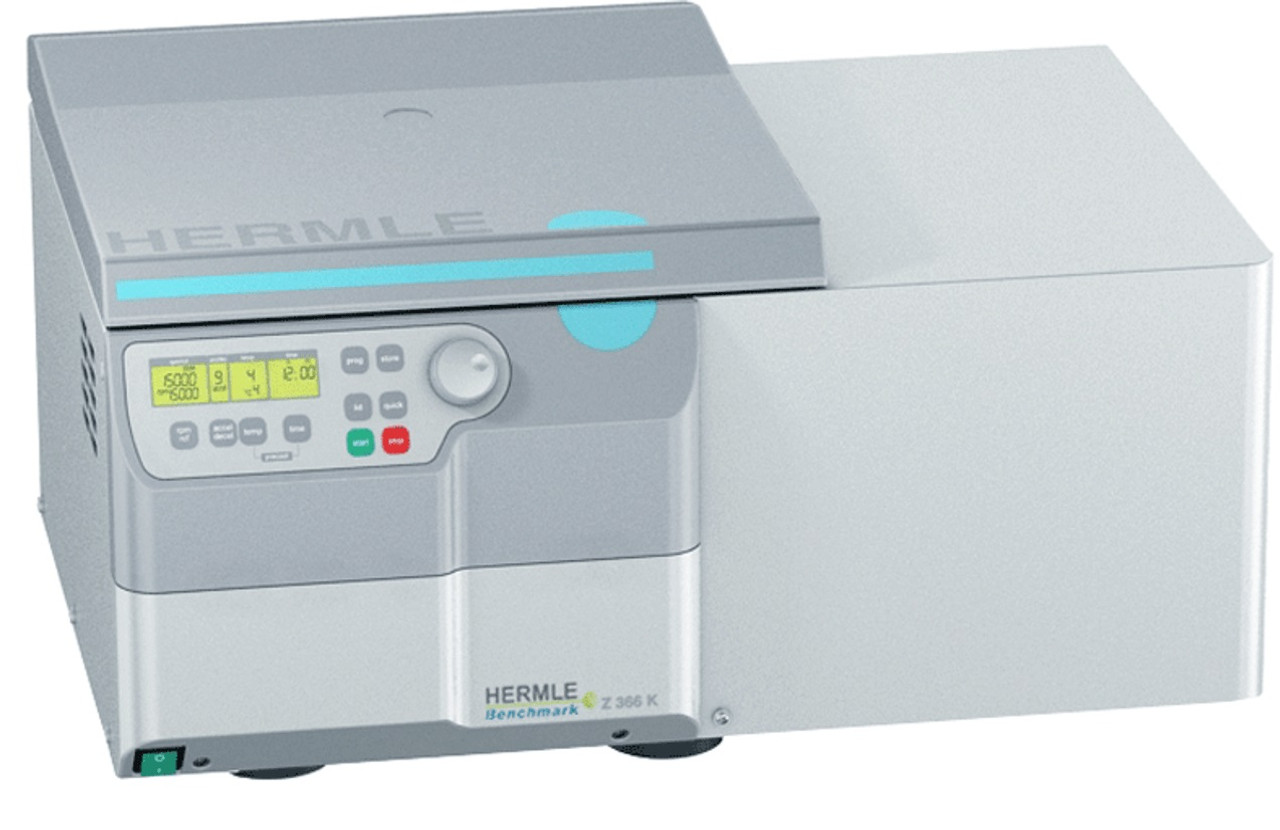Large volume centrifuges aren’t the staple piece of equipment that microcentrifuges are, but what if you need to spin a sample greater than 2 milliliters in volume?
These machines are used for centrifuging volumes up to a liter. This is useful in the preparation of blood, the isolation of specific cell compartments, and more.
They are designed to bear larger loads and distribute centrifugal force through samples that other machines are unable to accommodate.
Sounds complicated? It isn’t! Many of the centrifuges you see in the lab can be adapted to work with larger volumes.
Universal centrifuges give you the option of using different rotor heads to hold larger containers.
You just need to be thorough about learning the specifications of the machine you use to know if it can be modified to handle a workflow of interest.
Continue reading more to learn about how your laboratory centrifuge can be used to work with larger sample volumes effectively.

Enhancing Sample Preparation Efficiency
These types of centrifuges are important in the fractionation and isolation of blood components.
Because blood can easily coagulate or degrade if mishandled, you must use equipment that creates a fast and efficient workflow.
You want to be able to put all of your samples in at once and obtain the materials you need for each downstream test.
Many protocols for blood cell isolation involve the use of large volumes (5-50mL).
This is because buffers are needed to achieve separation of blood components like white blood cells, red blood cells, and plasma.
See section 4.1.2 on isolation of white blood cells to see an example of how a small volume sample is used in a process that requires a large volume centrifuge.
Processes that isolate multiple components from a sample are often structured like this, and a protocol may even require large starting volumes.
Supporting Clinical Diagnostics
Blood isolation: This type of equipment is used for the diagnosis of anemia, low white blood cell count, plasma DNA analysis, and much more.
Urinalysis: Analysis of urine specimens often requires the use of samples with volumes of 5mL or slightly greater to test for proteins, ketones, and other metabolites.
Facilitating Advanced Research Applications
These types of machines are on the cutting edge of research and diagnostics even though they have been around. Take a look at some ways they are essential:
- Large volume centrifuges are being used as tools for isolating biomarker proteins in urine that aid in the diagnosis of cancer.
- Plasma separation is used to isolate cell free DNA and study markers associated with health and disease.
Research using cell free DNA has become an exciting topic in cancer, immunity, and prenatal health.
- Nuclear isolation from cell culture requires volumes of 50mL in order to prepare samples for FACS and other downstream processing.
Emerging research on distinct populations of nuclei utilizes this method for RNA sequencing.
Step-by-Step How to with Large Volume Samples
- Prepare samples in containers that fit the rotor you plan to use.
- Make sure samples are the same volume.
- Set the centrifuge to the appropriate speed and temperature.
- Check the acceleration and braking is set correctly. Some sample types require special settings.
- Balance the tubes with an equal volume tube if you have an odd number.
Improving Laboratory Safety and Compliance
There are a few rules to remember when using this type of equipment in the lab:
- Wear personal protective equipment, meaning gloves, a lab coat, masks, and face shield when needed.
- Balance your samples with the exact same volume of liquid.
- Make sure you are using the correct rotor head for the task at hand.
- Check the acceleration, deceleration, temperature, and centrifugal force.
- Make sure that the rotor is working properly and the lid is closed tightly before running the machine.
- Make sure all tubes and holders have no cracks or breaks.
Not following the instructions in your protocols or operating procedures for equipment may result in sample loss, equipment damage, or injury.
Visit the Hermle website for literature for the equipment we offer in our catalog.
Cost-Effectiveness in Laboratory Settings
Large volume centrifuges are convenient because they allow large amounts of sample to be processed and saved for downstream applications.
They are an integral part of laboratory workflows that require density-based separation of a sample into components.
They are a time saver because they get rid of the need to divide samples into smaller portions.
This can also be helpful for reducing the number of containers needed for a protocol.
Shop Large Volume Centrifuges for Everyday Use
Large volume centrifuges are essential tools for much of the emerging clinical research on blood and urine biomarkers.
A diagnostic hero that every clinical lab should have!
They are also used in cell culture for FACS sample preparation. Any lab interested in running a clean workflow for flow cytometry applications should have one.
Universal centrifuges provide multiple options for hanging samples. You may already have the right equipment and just need a change of rotor head.
See the nuclear isolation protocol listed here for an example that used large volume tubes for FACS after passing through a mesh strainer.
This example underlines how essential options are because the volume of liquid is small, but straining tissue requires a larger tube than the other steps.
This can be done using any universal centrifuge that gives the option of attaching larger volume rotor heads.
We sell rotors if you need them, you may not need to buy new equipment.
Well, suppose the microcentrifuge is all you’ve got… Stellar Scientific supplies the Hermle line of Universal centrifuges at great prices.
See the Z366 for 16 x 15mL samples or up to 4 x 250mL, or consider the Z496 under bench and floor models that can centrifuge 4 x 1L with refrigeration.
Don’t forget to shop for containers as well See our screw capped 250mL containers and other large volume containers in lab consumables.
We’re glad you took the time to read about these useful pieces of equipment today! Now you know how adaptable and advantageous they are in even the most cutting edge clinical diagnostics and research.
Footnotes:
_____________________
- Korabecna, M., Zinkova, A., Brynychova, I. et al. Cell-free DNA in plasma as an essential immune system regulator. Sci Rep 10, 17478 (2020). https://doi.org/10.1038/s41598-020-74288-2
- Mendy M, Caboux E, Lawlor RT, et al. Common Minimum Technical Standards and Protocols for Biobanks Dedicated to Cancer Research. Lyon (FR): International Agency for Research on Cancer; 2017. (IARC Technical Report, No. 44.) SECTION 4., Selected protocols. Available from: https://doi.org/10.1038/s41598-020-74288-2
- Nadelmann, E. R., Gorham, J. M., Reichart, D., Delaughter, D. M., Wakimoto, H., Lindberg, E. L., Litviňukova, M., Maatz, H., Curran, J. J., Ischiu Gutierrez, D., Hübner, N., Seidman, C. E., & Seidman, J. G. (2021). Isolation of Nuclei from Mammalian Cells and Tissues for Single-Nucleus Molecular Profiling. Current protocols, 1(5), e132. https://doi.org/10.1038/s41598-020-74288-2
- Thomas, C. E., Sexton, W., Benson, K., Sutphen, R., & Koomen, J. (2010). Urine collection and processing for protein biomarker discovery and quantification. Cancer epidemiology, biomarkers & prevention : a publication of the American Association for Cancer Research, cosponsored by the American Society of Preventive Oncology, 19(4), 953–959. https://doi.org/10.1038/s41598-020-74288-2


